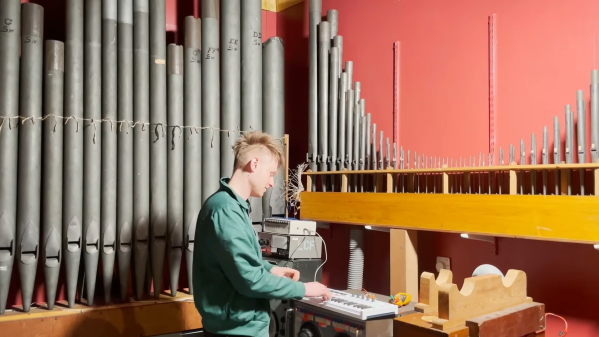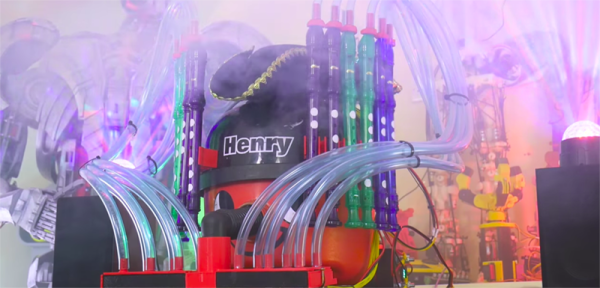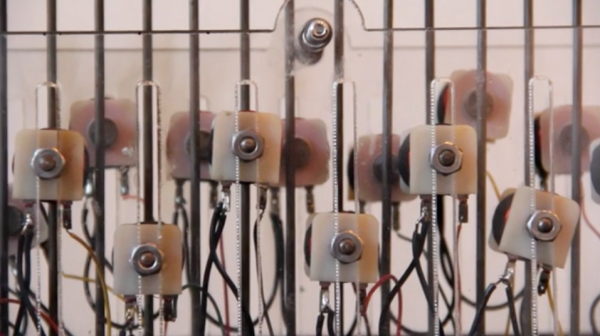As electronics hobbyists we are grateful to our spouses and flatmates who gracefully tolerate all of our weird equipment and chaotic projects in their homes. But it takes a different level of dedication to share one’s home with a pipe organ enthusiast: back in the 1970s, one organist in Bristol went to the effort of installing a full-sized church organ into their house, effectively turning the modest dwelling into one giant musical instrument. Recently however, the house passed on to new owners who, understandably anxious to reclaim some space, listed the whole system on eBay.

Thankfully, the auction was won not by some scrap metal dealer but by [Look Mum No Computer], our favourite expert on odd musical instruments. He drove out all the way from Kent to help disassemble the organ and stuff the dozens of pipes, miles of cable and numerous valves, tubes, latches and switches into his van. Once back home, he faced the daunting task of reassembling the whole lot into something capable of playing music, which he’s currently documenting in a video series.
The organ’s new home is This Museum Is (Not) Obsolete, where it has its own room decorated in a style similar to the house it spent much of its life in. The first step to getting it working was to fire up the blower, which is effectively a powerful electric air pump together with a pressure-regulating mechanism. Once this was working, one row of pipes was added to test the actuation system. This consists of a set of solenoids that simply open or close the air supply to each pipe. [LMNC] still had an Arduino-based organ driver system from an earlier project, which allowed him to connect a MIDI keyboard to the partially-complete instrument and play a few notes on it.
There’s still a lot to be done, but we’re definitely impressed by what [LMNC] has achieved so far and can’t wait to see the organ restored to its former glory. We already knew that you could control pipe organs through MIDI, and we’ve seen much smaller organs built from scratch. Thanks for the tip, [hackbyte]! Continue reading “How To Move A Full-Sized Church Organ From A House To A Museum”



















